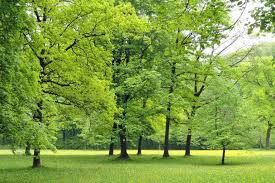The Importance of Green Spaces in Urban Areas
Green spaces play a crucial role in enhancing the quality of life in urban areas. These areas, whether parks, gardens, or even rooftop terraces, provide numerous benefits to both the environment and the community.
Environmental Benefits
Green spaces help to mitigate the effects of urban heat islands by providing shade and cooling effects. They also absorb carbon dioxide and other pollutants, improving air quality. Additionally, they support biodiversity by providing habitats for various plant and animal species.
Social Benefits
Access to green spaces has been linked to improved mental health and well-being. They offer opportunities for relaxation, exercise, and social interaction, promoting a sense of community among residents. Children benefit from outdoor play areas that encourage physical activity and creativity.
Economic Benefits
Well-maintained green spaces can increase property values and attract businesses to an area. They also contribute to a city’s attractiveness as a tourist destination. Furthermore, green infrastructure can help manage stormwater runoff and reduce the risk of flooding.
Challenges and Solutions
Despite their many benefits, green spaces in urban areas face challenges such as limited space, maintenance costs, and competing land uses. To address these challenges, cities can adopt innovative solutions such as vertical gardens, green roofs, or community gardens that make efficient use of available space.
Conclusion
Green spaces are essential components of healthy and sustainable cities. By recognising their value and investing in their creation and maintenance, urban areas can reap the numerous benefits they offer to residents, the environment, and the economy.
Exploring the Role and Benefits of Green Spaces in Urban Environments: FAQs on Sustainability, Recreation, Community Involvement, and Policy Initiatives
- What are the benefits of green spaces in urban areas?
- How do green spaces contribute to environmental sustainability?
- What recreational activities can be enjoyed in green spaces?
- How can communities get involved in maintaining and improving green spaces?
- Are there any initiatives or policies promoting the creation of more green spaces in cities?
What are the benefits of green spaces in urban areas?
Green spaces in urban areas offer a multitude of benefits that contribute to the well-being of both residents and the environment. These areas provide essential environmental benefits by helping to reduce pollution, improve air quality, and support biodiversity. Moreover, green spaces serve as vital spaces for relaxation, recreation, and social interaction, promoting mental health and community cohesion. Additionally, they enhance the aesthetic appeal of urban landscapes, increase property values, and contribute to a city’s overall resilience against climate change impacts. Overall, the presence of green spaces in urban areas plays a crucial role in creating healthier, more sustainable, and liveable cities for all.
How do green spaces contribute to environmental sustainability?
Green spaces play a vital role in promoting environmental sustainability through various mechanisms. Firstly, they help combat climate change by absorbing carbon dioxide and releasing oxygen, thereby mitigating greenhouse gas emissions. Additionally, green spaces aid in reducing urban heat island effects by providing shade and cooling the surrounding areas. They also support biodiversity by providing habitats for diverse plant and animal species, contributing to ecosystem resilience. Overall, green spaces are essential in maintaining a healthy environment and fostering sustainable practices within urban areas.
What recreational activities can be enjoyed in green spaces?
Green spaces offer a wide range of recreational activities for people of all ages to enjoy. From picnicking and sunbathing to jogging and cycling, there are plenty of opportunities for outdoor exercise and relaxation. Many green spaces also provide facilities for sports such as football, basketball, and tennis, allowing visitors to engage in team activities or individual workouts. Nature enthusiasts can explore walking trails, birdwatching spots, and botanical gardens within green spaces, immersing themselves in the beauty of the natural environment. Additionally, events like yoga classes, outdoor concerts, and community festivals often take place in green spaces, fostering a sense of connection and well-being among participants.
How can communities get involved in maintaining and improving green spaces?
Communities can play a vital role in maintaining and enhancing green spaces by actively engaging in various initiatives. One effective way for communities to get involved is through volunteering for clean-up events, tree planting activities, or maintenance projects within green spaces. Additionally, residents can participate in community gardening programmes or adopt-a-park schemes to take ownership of specific areas and ensure their upkeep. Collaborating with local authorities and environmental organisations can also provide opportunities for community-led projects that focus on improving the biodiversity and overall quality of green spaces. By working together and taking pride in their surroundings, communities can contribute significantly to the preservation and enhancement of green spaces for the benefit of all.
Are there any initiatives or policies promoting the creation of more green spaces in cities?
There are several initiatives and policies in place to promote the creation of more green spaces in cities. Many local governments have adopted urban planning strategies that prioritise the development of parks, gardens, and other green areas within city limits. Some cities have established specific programmes to convert vacant lots or unused spaces into community gardens or urban forests. Additionally, there are grants and funding opportunities available to support the implementation of green infrastructure projects that enhance the overall sustainability and livability of urban environments. By actively promoting the expansion of green spaces, cities can improve residents’ quality of life and contribute to a healthier and more resilient urban landscape.
